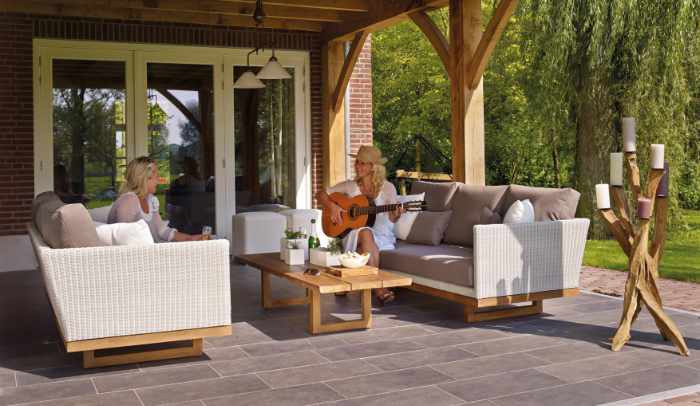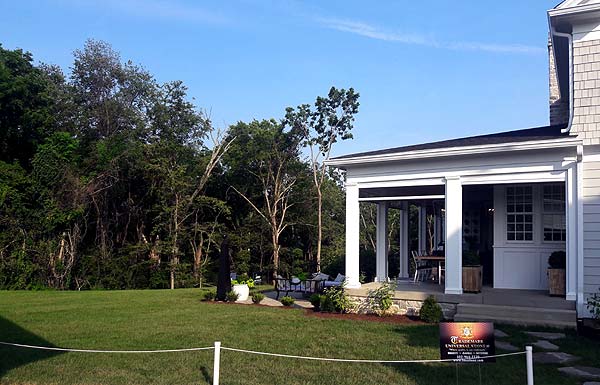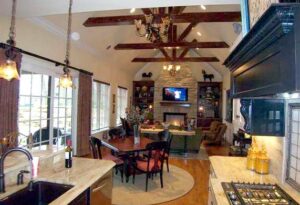Homeowners increasingly realize the importance of extending their interior design concepts to outdoor spaces, creating a welcoming and cohesive living environment. Outdoor areas are no longer an afterthought; they now seamlessly integrate with our homes, functioning as extensions of our living spaces. This article delves into the art of designing outdoor spaces that harmonize with your home’s interior, exploring the role of elements such as an access door in achieving this integration.

9 Tips for Designing Outdoor Spaces
1. Bridging the Gap Between Inside and Outside
Achieving a seamless indoor and outdoor design integration begins by establishing a cohesive design language. The process starts with understanding your home’s interior style. Whether your interiors lean toward modern minimalism, traditional charm, or something in between, the key is to identify the core design elements that resonate with your taste. Once you know these things, you can combine them with your outdoor areas.
2. Translating Design Elements for Harmony
The interplay of color palettes, materials, and textures is vital in establishing synergy between indoor and outdoor spaces. The challenge lies in adapting these elements creatively.
Drawing inspiration from your indoor furniture styles and arrangements, seek outdoor counterparts that mirror the same sensibilities. This synchronization is evident in furniture choices, lighting fixtures, and decorative items like cushions and throw pillows.
3. Floors that Transition Smoothly
Flooring is a linchpin in design. Whether you’re working inside or on your home’s exterior designs. Extending your interior flooring materials outdoors creates a visual link that bridges the gap between the two spaces. Whether opting for elegant tiles, warm hardwood, or rugged concrete, carrying these materials beyond your home’s threshold establishes a harmonious flow. Additionally, selecting flooring colors and textures harmonizing with both environments reinforces the seamless transition.
4. Seamless Transitions through Doors and Windows
Doors and windows act as gateways connecting indoor and outdoor realms. Opting for styles that facilitate a smooth visual and physical transition enhances the coherence between these spaces. Frameless or sliding windows don’t block your view, making it hard to tell the difference between inside and outside. The strategic placement of these elements and thoughtful threshold designs significantly impact the overall experience of moving between spaces.
Elements with innovative designs, like the BA-FD-8060 aluminum floor access door, ensure a seamless transition between indoor and outdoor spaces and introduce a touch of sophistication. Integrating them into your design layout elevates the fusion of environments, fostering a connection beyond the visual and extending to a tactile experience.
5. Incorporating Greenery

Including natural elements in your design is a potent way to facilitate a harmonious transition. Extending your indoor plants to outdoor spaces doesn’t just introduce greenery; it deepens the connection with nature. Furthermore, aligning landscaping choices with your interior design aesthetics proves highly effective. Vertical gardens, potted plants, and meticulously chosen outdoor vegetation are design elements that bridge the divide.
6. Functionality Outside: Practical Living Space
Functionality is a cornerstone of design, both indoors and out. Adapting interior functionality to outdoor spaces ensures a smooth transition between the two. Whether establishing an outdoor kitchen and dining area, a cozy lounge, or even a productive workspace, reflecting indoor functionalities extends the practicality of your property.
Weather-resistant furniture and durable materials are essential to maintain harmony between indoor and outdoor spaces. Balancing durability and aesthetics is critical, and the BA-FD-8060 aluminum floor access door excels here. Not only does it serve as a design element, but its robust construction guarantees longevity and resilience against diverse weather conditions.
7. Setting Ambiance with Illumination
Lighting establishes mood and ambiance for indoor and outdoor spaces alike. Consistency in lighting design across both domains maintains design coherence. By mixing atmospheric, work, and decorative lighting, layered lighting meets different goals and improves the experience in both areas. Furthermore, strategically positioned lighting fixtures highlighting architectural features and landscaping draw attention to the cohesive design elements.
8. Designing with Sustainability in Mind
Designing spaces that resonate with nature aligns inherently with sustainability. Opting for eco-conscious materials, integrating rainwater harvesting systems, and incorporating solar panels for energy efficiency align with this ethos. Planting native species in your landscape also fosters a sustainable ecosystem. These choices complement your interior aesthetics and contribute positively to the environment.
9. Longevity through Thoughtful Maintenance
Choosing durable materials and implementing proper maintenance practices are pivotal to extending the lifespan of both indoor and outdoor design elements. This way you won’t be constantly in need of DIY projects to keep your outdoor spaces in tip-top condition.
Consistent upkeep and regular care routines help preserve your spaces’ aesthetics and functionality. This approach applies equally to the BA-FD-8060 aluminum floor access door, which, when well-maintained, continues to enhance the cohesion and aesthetics of your indoor-outdoor integration.
Conclusion
Integrating indoor and outdoor spaces is no longer a luxury; it’s a core aspect of contemporary living. Cultivating a cohesive design language that bridges these realms elevates the overall living experience. As you start to plan, remember that bringing your indoor and outdoor spaces together is an investment in a more unified, beautiful, and helpful place to live.



